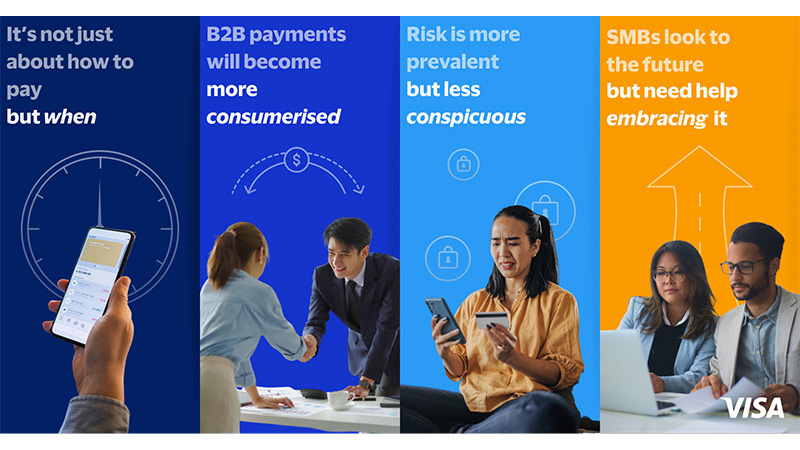Decoding payments in Asia Pacific for 2024

Asia Pacific’s payments ecosystem has undergone dramatic changes in the past decade. New technologies have emerged to digitalise a traditionally cash-led landscape and rewrite how consumers expect to pay and be paid.
Fast-evolving consumer expectations have also fed the rise of more flexible forms of digital payments and consumption, including subscription platforms, online and social commerce, and on-demand financial services.
In 2024, this tremendous pace of change is set to drive further evolution in payments as consumers and businesses alike seek quicker, more seamless, and more secure ways to pay and be paid. As infrastructure and technology continue to strengthen, we also expect new solutions to emerge to meet increasing user expectations.
1. It’s not just about how to pay, but when
As consumers become more familiar with digital payments, success isn’t just about figuring out what solutions customers want. It is critical to consider when to offer the right solutions at the right moment in the customer journey.
That is the appeal of embedded finance – integrating financial services into traditionally non-financial platforms. Today, e-commerce platforms are offering insurance for user purchases at the point of checkout, while Buy-Now-Pay-Later services also let consumers to split their payments without leaving the website or shopping app.
It’s a similar story with digital wallets that make it easier for cardholders to pay digitally, and Mobility-as-a-Service (MaaS) solutions that are integrating payments so that users can plan, book, and pay for commutes all at one place.
This opportunity is also surfacing in business-to-business (B2B) payments. Visa and BCG found that by 2025, embedded finance is set to unlock more than US$242 billion in market opportunity for financial providers across Asia Pacific, especially in the small and medium-sized businesses (SMBs) segment.
2. B2B payments will become more “consumerised”
The coming months and years will see generational shifts reshape businesses as a new wave of Generation Z and Millennial leaders take charge. They grew up with easy and intuitive digital payments and their expectations will drive a “consumerisation” of B2B payments.
Two forces are critical to this shift. First is interoperability – how much different systems can work together seamlessly. It requires developers, businesses, and governments to collaborate on and deploy open application programming interfaces (APIs) that enable the acceptance of different payment options in one platform, like how organisations in Asia Pacific can soon make payments seamlessly on SAP platforms with Visa corporate cards, without navigating a maze of payment options or leaving the ecosystem.
The second force is rising demand for “all-in-one” multi-capability B2B payment solutions. These platforms – especially popular among small businesses – aggregate services such as payments, lending, and invoice management to help businesses to complete essential tasks through a single interface.
3. Risk will be more prevalent, but less conspicuous
Asia Pacific’s increasingly digital payments landscape will offer cybercriminals a bigger target than ever. For example, generative AI systems built on large language models are getting much better at emulating human-like responses. Unfortunately, fraudsters can use these capabilities to make fraudulent emails and phishing texts appear more plausible by using better language, making it harder for consumers to spot the fakes.
Also on the rise are synthetic identity fraud, account takeovers, and “foot-in-the-door” fraud models, where fraudsters initially pay victims small amounts of money to gain their trust. Meanwhile, as Asia Pacific businesses become more connected, they are also becoming more vulnerable to cybercrime.
With so many new forms of fraud, traditional methods of detection and prevention are not enough. The good news is that new technologies are catching up. Machine learning and AI-powered solutions, like Visa’s Advanced Authorisation (VAA), can eliminate potential fraud risks ahead of transactions by rapidly detecting anomalies and threats in real time, a boon for businesses that do not have the resources to do so themselves.
4. SMBs look to the future, but need help embracing it
Asia Pacific’s small business sector will continue to experience substantial changes in 2024 and beyond. Digitalization has democratized economic participation, with millions of young entrepreneurs forming micro-businesses and joining the global creator economy.
However, these new enterprises and SMBs in other sectors all face significant challenges, with rising costs requiring smarter and more cost-efficient adoption of new technologies.
This means that SMBs will be more selective when adopting payments solutions in 2024. The need for convenient, reliable, and seamless digital payments, coupled with growing global expansion, means that SMBs will prioritise practical solutions that enable them to sensibly reach more customers at home and abroad.
We will also see more SMBs turn to agile and flexible sources of capital – such as cards that fit the needs of small businesses, including flexible access to micro sources of credit.
As payments innovation and development continue to accelerate in Asia Pacific, one thing is clear – the payments ecosystem must stay ahead of the curve. As speed, convenience, and security take centre stage, we look forward to working across the ecosystem to create new solutions that advance the Asia Pacific landscape together.